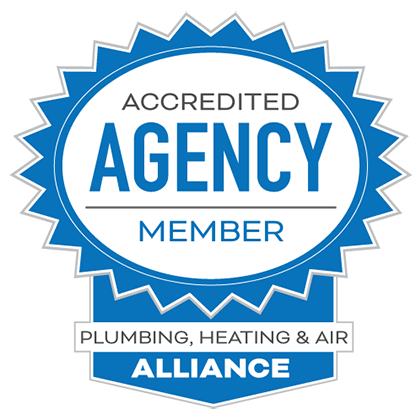You might have heard about HVAC flat rate pricing from industry chatter or browsing various websites and publications.
Here’s the deal: HVAC companies can increase profit margins with flat rate pricing.
Key Takeaway
Flat Rate Pricing creates a consistent price for each HVAC service, allowing companies to set client expectations, streamline payments and billing, and scale their businesses in 2024.

HVAC Flat Rate Pricing Formula
The flat rate formula is straightforward:
(Standard hourly rate x typical job time (in hours)) + (standard cost of materials) + (standard cost of materials x credibility/reputation markup) = Flat RateYour company’s flat rate will vary by service type since different jobs take longer and require more expensive materials.
Benefits of Flat Rate Pricing for HVAC Companies
Adopting a flat rate pricing structure presents several benefits:
- Generate more HVAC leads
- Solidify customer expectations
- Foster greater employee morale
- Increase business scalability
- Streamline collections and billing
Generate More HVAC Leads
Pricing consistency creates more clarity for the consumer, increasing lead generation. Prospects who view the pricing beforehand are more likely to inquire about your services.
Research shows that transparent service prices can also increase consumer’s overall trust in your company and brand.
As a result, publishing a price book on your website or Google Business Profile can increase HVAC leads exponentially.
Of course, other factors will determine how frequently prospects view your price book, which makes marketing and search engine optimization particularly beneficial.
Solidify Customer Expectations
Hourly + materials pricing models, often called time and materials (T&M) pricing, are the culprit for most negative reviews.
We’ve all experienced those Google reviews where customers spew anger and hatred while threatening your company. The concrete price structure eliminates the concept of “haggling.”
The negativity surrounding traditional HVAC pricing stems from not setting the proper expectations for the client. Flat rate pricing ensures they are aware of the costs upfront.
You might get pushback after completing the job, but they cannot refute expectations. In addition, an estimated 92% of homeowners prefer flat rates.
Foster Greater Employee Morale
Your techs will also benefit from the flat rate pricing because they will be appropriately compensated for each service and deal with fewer customer tirades.
Furthermore, techs won’t have to deal with “haggling” from homeowners while on the job because the terms are already established.
Having a clear vision of each service’s payout helps organize employees’ minds and perform at a higher and more consistent level.
This can also help recruit new employees for your business, incentivize workers to seek jobs with your company, and help your hiring team project salaries.
Increase Business Scalability
Much like HVAC marketing, flat rate pricing removes your business from the gig economy and allows you to scale your business.
Charging an hourly rate makes projecting future earnings nearly impossible, while flat rate pricing makes it straightforward.
As you grow your business from a startup to a powerhouse, these financial implications make a significant difference.
The flat rate model also helps you refine and adjust pricing to match market trends and take advantage of boosts in business credibility and reputation.
It can even be used in marketing materials like emails, direct mail, and conversion-ready website landing pages.
Streamline Collections and Billing
Flat rate pricing streamlines collections and billing, making it more digestible for customers and easier to collect.
Furthermore, it reduces the complexity of your invoices and fulfills the client’s pre-set expectations. Moving your heating and cooling company into the digital age is a win-win for everyone.
Flat rate pricing, in combination with HVAC invoice software, can change the scope of your business.
Customers view your company as modern and progressive, while your collections become smooth and quick. Furthermore, you don’t have to worry about unpaid invoices from previous jobs.
Potential Downsides of Flat Rate Pricing
Business decisions come with potential risks, and you should know about them regarding flat rate pricing.
While it is the consensus choice for scaling HVAC companies, here are potential downsides:
- Miscalculations: Incorrectly calculating a flat rate price for a specific service can blow your margins and lead to bankruptcy
- Customer Complaints: Some customers are likely to complain about the cost, especially when the job takes less time than expected.
- Monitoring Competitors: Requires consistently monitoring competitor prices so that you don’t price yourself out of the market.
What Others Are Saying About HVAC Flat Rate Pricing
Sample Pricebook PDF
Final Verdict
Flat rates can benefit HVAC companies and is the consensus choice for selling your business. Traditional T&M models lead to more negative reviews and on-the-job negotiations.
Conversely, flat rates allow HVAC companies to project future earnings and set realistic client expectations upfront.





